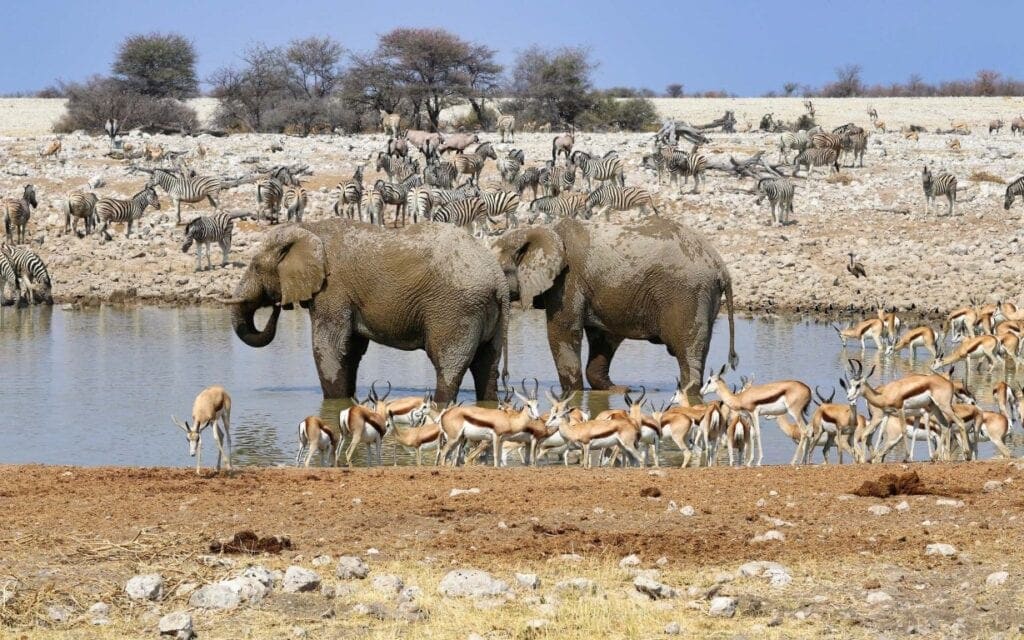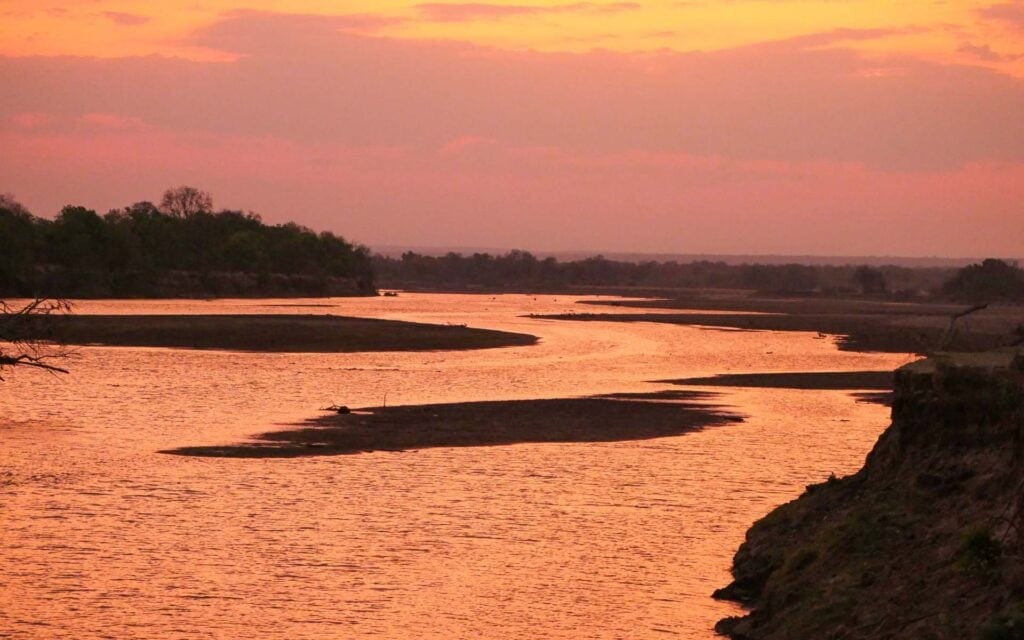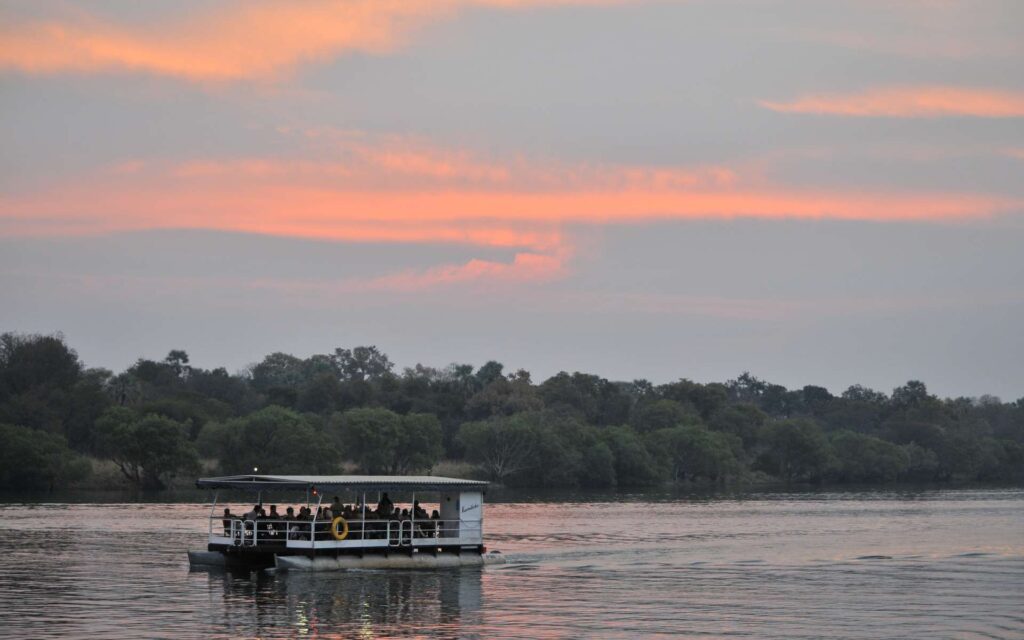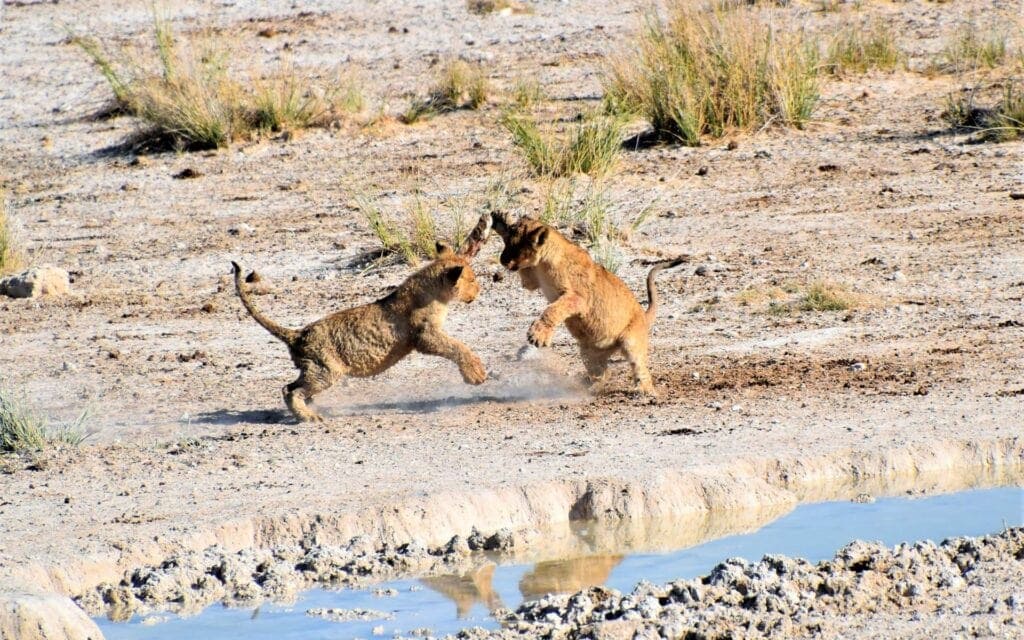When you think of southern Africa, do you imagine vast plains and grasslands filled with wildlife, or does your mind go to the vast expanses of sand that make up some of the largest deserts in the world? Though these landscapes seem worlds apart, Zambia’s savannahs aren’t all that far away from the ancient Namib Desert. In fact, the two countries even share a border. With that in mind, are you eager for a safari in Namibia or a safari in Zambia?
In Namibia, the vast dune sea swallows up the land, stretching from coast to city. Further north, wildlife congregates at Etosha National Park to take advantage of its clay pans. Meanwhile, Zambia boasts some of the world’s most famous game-viewing areas, including Kafue National Park, the largest in the country, and South Luangwa National Park, where 60 mammal species vie for survival.
Despite sharing borders, Namibia and Zambia are markedly different. Most notably, Zambia lacks desert environments and is instead home to the mighty Zambezi River and Victoria Falls, while Namibia is arid in all but its northernmost regions. This means that the countries offer vastly different safari experiences with different types of wildlife.
Ultimately, both countries boast some of the finest game viewing in all of Africa. So, if you don’t plan on visiting both, how can you possibly choose?
Well, we’ve built thousands of bespoke itineraries for travellers over the years, and this is where it all starts. If you really have to choose just one, you’ll need to be equipped with everything you need to know about safaris in Namibia and Zambia, how they differ, and the types of experiences you can expect on either side of the border. Let’s dive straight into it and help you choose your next African safari destination.
Quick Comparison: Namibia vs Zambia

Quick Comparison: Namibia vs Zambia
| Namibia | Zambia | |
| Top Safari Destinations | Etosha National Park, Namib-Naukluft National Park, Erindi Private Game Reserve, Caprivi Strip, Skeleton Coast National Park | Kafue National Park, Kasanka National Park, Lake Kariba, Liuwa Plain National Park, Lower Zambezi National Park, North and South Luangwa National Park |
| Peak Seasons | July-November | May-October |
| Activity Highlights | Big Five Safaris, Stargazing, Desert Driving, Walking Safaris, Cheetah Tracking, Dune Climbing, Sandboarding, Quad Biking | Victoria Falls, Canoe Safaris, White Water Rafting, Walking Safaris |
| Iconic Wildlife | The Big Five, Gemsbok (Oryx), Springbok, Bat-Eared Foxes, Namaqua Chameleon, Cheetah, Hippopotamus, Giraffe, African Wild Dog, Whale Shark, Damaraland Mole-Rat, Spotted Hyena, Mountain Zebra, Meerkat, Cape Fur Seal | The Big Five, Cheetah, Hippopotamus, Thornicroft’s Giraffe, African Wild Dog, Spotted Hyena, Zebra, Nile Crocodile, Lechwe, Sitatunga, Waterbuck, Savannah Monitor, Straw-Coloured Fruit Bat |
Climate
| Namibia | Zambia | |
| Rainy Season | September-November; February-April | November-April |
| Dry Season | December-January; May-August | May-October |
| Best Time for Game Viewing | Dry Season | Dry Season |
The weather is predictable in both countries, especially when planning around the rainy season – and this matters for a safari. During the dry winter months, there’s less vegetation, making it easier to spot wildlife in the bush. Additionally, animals congregate around water sources, ensuring excellent game-viewing opportunities at waterholes and rivers.
In Namibia, the Etosha National Park offers incredible wildlife viewing during the dry season, as animals flock to its famous salt pans and waterholes. Namibia’s desert landscapes, including the iconic Sossusvlei dunes and Skeleton Coast, provide a stark but stunning contrast to its wildlife regions. The country experiences dry winters and hot summers, with minimal rainfall in most areas, making it easier to plan safaris year-round. However, temperatures can soar in the summer months, especially in desert regions, so timing your visit during the cooler winter or shoulder seasons is ideal for comfortable exploration.
If you’re considering pairing a Namibian safari with visits to its unique landscapes, the dry winter months from May to September are the best time to go, ensuring both excellent wildlife viewing and comfortable travel conditions.
Meanwhile, in Zambia, there’s virtually no rainfall at all in June, July, and August, giving visitors a great blend of mild temperatures and dry conditions. Animals tend to congregate around water sources, making this a particularly exciting time to visit places like Lower Zambezi National Park and the Luangwa Valley.
Wildlife
| Namibia | Zambia | |
| Unique Wildlife | Mountain zebra, Damaraland mole-rat, Namaqua chameleon, Cape fur seal, gemsbok (oryx) | South-central black rhinoceros, sitatunga, puku, lechwe, topi, straw-coloured fruit bat |
| Other notable wildlife | Cheetah, zebra, blue wildebeest, spotted hyena, African wild dog, hippopotamus, Nile crocodile, giraffe | Cheetah, zebra, blue wildebeest, spotted hyena, African wild dog, hippopotamus, Nile crocodile, giraffe |
| Notable Birds | African fish eagle, martial eagle, secretarybird, rosy-faced lovebird, Rüppell's parrot, gabar goshawk, Ovambo sparrowhawk, great white pelican, greater flamingo, lesser flamingo | Chaplin’s barbet, African fish eagle, garganey duck, greater flamingo, lesser flamingo, kori bustard, Ross’s turaco, grey-crowned crane, wattled crane, great white pelican, shoebill, hamerkop, goliath heron, African spoonbill |
Namibia’s wildlife is as diverse as its dramatic landscapes, offering a unique safari experience. The Etosha National Park is a standout destination, renowned for its vast salt pans and waterholes that attract an array of animals, including elephants, lions, rhinos, and giraffes.
Namibia is also home to some of the world’s most iconic desert-adapted species, such as the hardy oryx, springbok, and the unique desert lions and elephants, which have evolved to survive in the harsh arid conditions of the Namib Desert and Kunene Region.
Along the remote Skeleton Coast, visitors may encounter Cape fur seals and even elusive brown hyenas. Namibia’s commitment to conservation has fostered thriving populations of wildlife, with extensive community-based conservancies playing a key role in protecting species like the critically endangered black rhino.
Best Safari Destinations
| Namibia | Zambia | |
| Bush Safaris | Etosha National Park, Erindi Private Game Reserve, Caprivi Strip | Kafue National Park, Kasanka National Park, Lake Kariba, Liuwa Plain National Park, Lower Zambezi National Park, North and South Luangwa National Park |
| Desert Safaris | Ai/Ais-Richtersveld Transfrontier Park, Namib-Naukluft National Park | |
| Marine Safaris | Skeleton Coast National Park |

If You Want to See the Big Five
You can see all of the Big Five in Namibia, but unfortunately, you won’t be able to do this in one place. Etosha National Park has four of these iconic animals, but you’ll have to find African buffalo elsewhere.
It’s a similar story in Zambia, where rhinoceroses are restricted to a handful of reserves, including North Luangwa National Park and Mosi-oa-Tunya National Park. That means you’ll need to visit more than one reserve to see all of the Big Five.
If You Want to See Lots of Elephants
An estimated 4,800 elephants live in Kafue National Park in Zambia, making it the obvious choice for elephant sightings. However, Namibia’s elephants are particularly special. Around 2,000 desert-adapted elephants roam Etosha National Park, and some believe that they are the tallest elephants in Africa.
If You Want to See Big Cats
There are over 200 lions in Kafue National Park alone, making it Zambia’s prime lion safari destination. Liuwa Plain National Park is also home to lions, as well as cheetahs and leopards. Meanwhile, South Luangwa National Park is an official Lion Conservation Unit.
Namibia has one of the largest populations of cheetahs that live outside of protected areas, thanks to various conservation initiatives based around the country.
If You Want to See Birds
Zambia is the obvious choice here, even though Namibia has its fair share of bird life. Despite only spanning 428 km2, Lochinvar National Park west of Lusaka is home to over 400 species of birds, including Zambia’s national bird, the African fish eagle. Keen birders should also visit Blue Lagoon National Park, where you can see the large, imposing wattled crane.
Activities

Going on safari is all about wildlife, but you can combine your game viewing with plenty of other exciting activities. In some cases, you can even enjoy a safari from above.
Activities
| Namibia | Zambia | Both Regions | |
| Safari Activities | Desert safaris in Namib-Naukluft National Park | Canoe safaris, watching the straw-coloured fruit bat migration in Kasanka National Park | Big Five safaris, photographic safaris, walking safaris, birding, horseback safaris, mobile camping |
| Fun Activities | Beach holidays, multi-day hikes, dune quad biking, sandboarding, dune driving, hot air balloon rides, dune climbing, visit to Epupa Falls | White water rafting | Bush walks, hiking, fishing, stargazing, mountain biking |
| Cultural Activities | Cultural tours, village visits, food tours, positive impact safaris |
What are the Pros and Cons of Each Region?
| Pros | Cons | |
| Namibia | Excellent game reserve infrastructure, especially in national parks and private game reserves. A blend of bush safaris and desert safaris. Wildlife is drawn to water sources in places like Etosha National Park Great for self-drive safaris. Coastline makes marine safaris possible. Easy transfers from major cities. | The best wildlife viewing is seasonal. The desert can be hot and harsh, especially in summer. Wildlife is sparse in desert regions. |
| Zambia | Diverse landscapes from deserts to deltas. Excellent infrastructure and a wide range of accommodation options. High concentration of wildlife with fewer tourists in some parks. Home to the largest mammal migration on the planet: straw-coloured fruit bats in Kasanka National Park. | Some areas can be expensive. The best wildlife viewing is seasonal. Bookings must be made well in advance as spaces are often limited. Zambia is a large country, so internal travel can take a considerable amount of time. |
Safety
Southern Africa is generally safe for tourists, particularly in well-established safari destinations like Zambia and Namibia. However, it is always advisable to follow local guidelines and travel advisories.
Safari lodges and parks have stringent safety protocols in place to ensure the safety of guests, including guided game drives and secure accommodations.
Urban areas may have higher crime rates, so travellers should take standard precautions and stay vigilant.

Cuisine
| Namibia | Zambia |
| Aside from more modern dishes, Namibia offers two culinary experiences: one drawing on indigenous cultures like Himba, San, and Herero, and another heavily influenced by the country’s German, Afrikaner, and British colonial histories. Oshikundu is a traditional alcoholic beverage made from fermented millet. Many communities enjoy vetkoek, a fried bread that’s also popular in South Africa. Typical German cuisine includes the Wiener schnitzel and various types of sausages. Safari lodges typically provide a range of gourmet meals, often incorporating local flavours and ingredients. | Zambian cuisine is influenced by a variety of cultures, including local ethnic groups as well as European and Indian. Nshima, a maize-based dish, is the staple food of Zambia and is typically eaten with a stew or relish. Popular stews include beef stew, chicken stew, and fish stew. Relishes, which are side dishes made from vegetables, fruits, or nuts, are also common. Other traditional Zambian dishes include ifisashi (fried caterpillars), kapenta (small dried fish), and munkoyo (cassava leaves). Zambian cuisine is typically hearty and flavorful, with a focus on fresh, local ingredients. |

Ready to Make Your Decision?
Both Namibia and Zambia provide exceptional safari experiences, but the right choice depends on what you’re after.
If you’re looking for striking desert landscapes, unique wildlife adaptations, and the option for self-drive adventures, Namibia is an excellent choice. You can explore iconic destinations like Etosha National Park, renowned for its salt pans and abundant waterhole game viewing, or venture into the rugged wilderness of Damaraland to see desert-adapted elephants and rhinos. Namibia’s dramatic landscapes, such as the towering dunes of Sossusvlei and the windswept Skeleton Coast, also provide incredible opportunities for photography and exploration.
On the other hand, if you’re in search of the quintessential safari experience made famous by Sir David Livingstone and other early colonial explorers, you’ll get to experience it in its full glory in Zambia. Add to that the largest mammal migration on Earth and the thundering beauty of Victoria Falls, and you’re all set for the Zambian safari of a lifetime.
Whichever destination you choose, you’ll come to appreciate why both Namibia and Zambia are among the best safari spots in Africa. When you’re ready to plan your adventure, speak to one of our expert Safari Travel Planners, and we’ll help create your perfect itinerary.